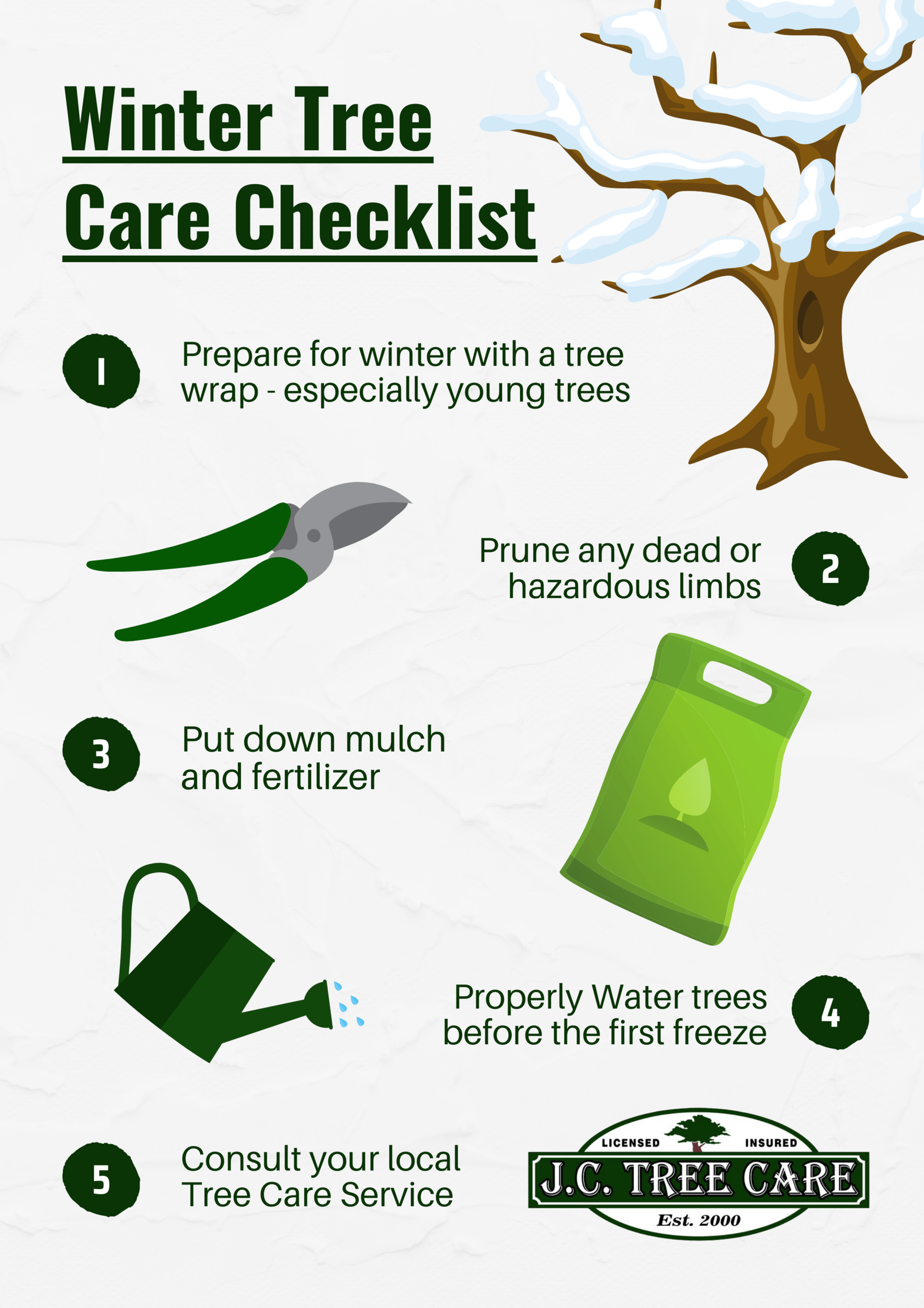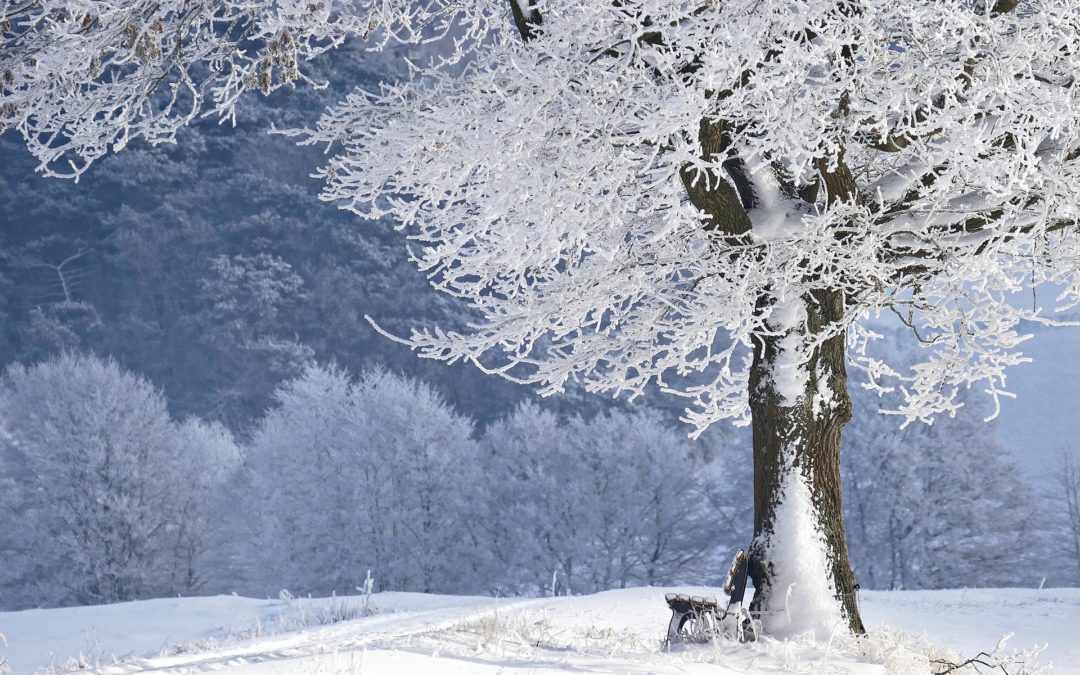You’re probably looking at the title of the article wondering “Why would I need a Winter Tree Care Checklist?”
When most people think of tree care, their mind jumps straight to the Spring season. It makes sense. The sun is shining, new plants are sprouting, and those beautiful green leaves are starting to fill up your trees once again. However, tree care is a year-round project, and one of the most important seasons to care for your trees during is Winter.
The cold weather and falling snow actually impact trees more than it seems. And so, making sure that your trees are ready for the Winter season is one of the most important things you can do to make sure that your trees are healthy and your home is safe.
Find Your Leaf
Wrap Your Trees
Wrapping trees for the Winter is a fairly common practice, especially for people with younger trees that are still growing. Using a wrap will help to insulate the tree and protect against the harsh winter weather.
If you do not wrap your trees, they can experience Frost Cracking or end up with discolored bark that will eventually flake and fall off.
Tree wrap can easily be found at hardware stores, your local gardening store, or simply on Amazon.
Prune Dead or Hazardous Limbs
Pruning trees is on our Winter Tree Care Checklist because it is by far one of the most important things you can do. Not only does pruning allow for new growth on your tree, but it removes a potentially hazardous element from your home – especially during the Winter.
Winter weather is particularly dangerous when it comes to the dead or damaged limbs left on a tree. The added weight from snow and ice causes these limbs to grow ever weaker and break off.
So it is best to remove these dead branches in the months before to keep your home or loved ones safe.
Mulch and Fertilize for the Winter
Putting mulch around the roots of your trees actually helps protect them more than you think! Adding an extra layer above the soil will help to keep the ground insulated when it gets cold outside. This protects your roots from freezing. Another benefit of mulching during the winter is that it will help to retain moisture in the soil which is essential for any plant’s survival.
Fertilizer is used to help improve trees’ immune systems to keep them healthy. It is a popular practice to fertilize trees in the fall and late winter because there is less risk of leaf burn, but also because trees often don’t get as many nutrients during the dormant winter months.
The type and amount of fertilizer will depend on your location, tree type, and personal preference.
Properly Water Trees
Freezing temperatures are more dangerous to your trees than actual snow itself. Why? Because, if the water that is in the ground freezes, then your tree won’t be able to absorb it. This is why it is so important to make sure that your trees are properly watered before the winter weather hits.
Here are some best practices for watering your trees during the winter:
• Water weekly in the Fall months if you often have trouble with the ground freezing.
• If you only have occasional freezing, then water your trees about a day before it is supposed to freeze.
• Make sure that you pay attention to the roots, as this is what soaks up the water.
• Tend to your baby trees and shrubs because their roots are not as strong.
• Water only when the temperature is above 40° F and the ground is not covered in snow. The earlier the better because it takes time for plants to absorb the water. You want them to have the chance to soak it up before the sun sets and the weather drops.
• Make sure you do not over-water your trees.
Consult Your Local Tree Care Service
If you are in need of help with pruning your trees, aren’t sure which fertilizer to use, or have any other tree care projects to take care of before the winter, your local Tree Care Service should be able to help!
At J.C. Tree Care, we have a team of licensed professionals ready to help you check off the boxes on your Winter Tree Care Checklist. Please contact us if you are in need of help or have any questions!

